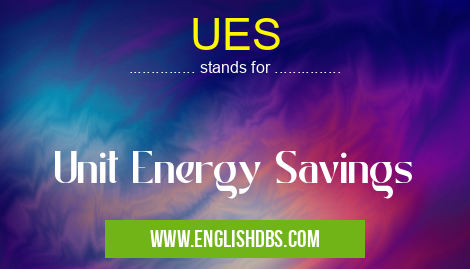What does UES mean in ENERGY
Unit Energy Savings (UES) refers to the amount of energy saved per unit of production or activity. It is a metric used to measure the energy efficiency of a system or process. A higher UES value indicates greater energy savings.

UES meaning in Energy in Governmental
UES mostly used in an acronym Energy in Category Governmental that means Unit Energy Savings
Shorthand: UES,
Full Form: Unit Energy Savings
For more information of "Unit Energy Savings", see the section below.
» Governmental » Energy
Essential Questions and Answers on Unit Energy Savings in "GOVERNMENTAL»ENERGY"
What is Unit Energy Savings (UES)?
How is UES calculated?
UES is typically calculated as follows:
UES = (Energy Consumption Before Optimization - Energy Consumption After Optimization) / Unit of Production
The unit of production can vary depending on the context, such as product quantity, service output, or area size.
What are the benefits of achieving high UES?
High UES brings numerous benefits, including:
- Reduced operating costs due to lower energy consumption
- Improved environmental sustainability by reducing greenhouse gas emissions
- Enhanced productivity and efficiency in operations
- Increased competitiveness in energy-intensive industries
- Compliance with energy efficiency regulations and standards
How can I improve UES in my system or process?
There are several effective strategies to enhance UES, such as:
- Investing in energy-efficient equipment and technologies
- Optimizing production processes to minimize energy waste
- Implementing energy conservation measures, such as lighting upgrades and insulation
- Training employees on energy-saving practices
- Regularly monitoring and analyzing energy consumption data
UES also stands for: |
|
| All stands for UES |
